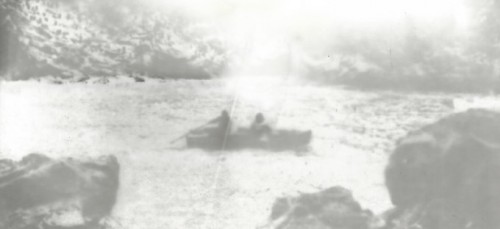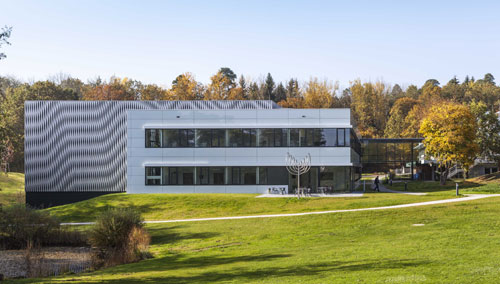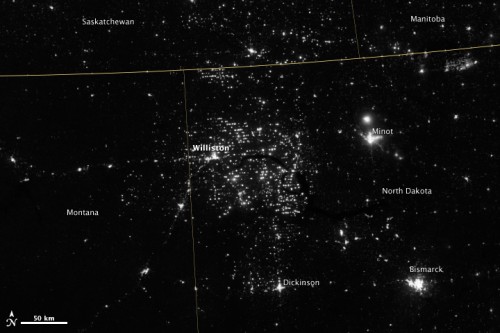Tag archives: out and about
Photonics by the Bay
By Margaret Harris in San Francisco
The International Year of Light is a global celebration, but right now, it’s definitely got its heart in San Francisco. For the past five days, experts in optics, lasers and biomedical imaging have been converging on the “city by the bay” for the annual Photonics West conference, and I’ve joined them in order to learn more about the hot topics in optical science.
View all posts by this author | View this author's profile
Oppenheimer and the Bomb
By Margaret Harris
It’s pretty easy to see why the Royal Shakespeare Company (RSC) wanted to stage a play about J Robert Oppenheimer. There is definitely a bit of Macbeth in the way this ambitious, aloof theoretical physicist rose to become the scientific leader of the Manhattan Project during the Second World War. Equally, there’s a hint of Caesar or Lear in Oppenheimer’s eventual downfall, which came thanks to a toxic combination of political intrigue and his own arrogance.
The parallels between “Oppie” and Shakespeare’s tragic heroes were highlighted on Saturday, when a group of physicists and artists gathered on stage at the RSC’s Swan Theatre for a panel discussion on “Oppenheimer and the Bomb”. The discussion was part of a programme of events related to the RSC’s production of Oppenheimer, a new play written by Tom Morton-Smith and based on Oppenheimer’s life in the 1930s and 40s. During the discussion, one of the panel members, director Angus Jackson, called Oppenheimer “a play about leadership” as much as science, noting that the leadership conflicts that Oppenheimer experienced were “comparable” to those of the heroes in the RSC’s traditional repertoire.
A visit to an island called Nuuk

Anaïs Tondeur in collaboration with Jean-Marc Chomaz, Paul Syrillin, 2014, shadowgram, 11 × 24 cm. Image courtesy of the artist and GV Art gallery.
By Margaret Harris
The story of Nuuk began in the early 18th century when a French naval officer landed on a barren, ice-covered island and noted its coordinates in his logbook. The island, he reported, was volcanic in nature, but little else was known about it; indeed, later visitors to its supposed location found no sign of land. Rediscovered in the 20th century, Nuuk was soon visited by a series of scientific expeditions, one of which noted that the island’s surface area was shrinking. An observation station was set up on a prominent headland, but in 2012, it abruptly ceased transmitting; satellite images later revealed that Nuuk had vanished entirely beneath the ocean surface. Coincidentally, the final signal from Nuuk arrived just as the 34th International Geological Congress was meeting in Australia to discuss the emergence of a new, human-influenced geological age: the Anthropocene.
Nuuk and the various forces that contributed to its demise are the subject of a fascinating exhibition currently on show (until 29 November) at the GV Art gallery in London. Lost in Fathoms is a collaboration between an artist, Anaïs Tondeur, and a physicist, Jean-Marc Chomaz, who specializes in fluid dynamics. To develop her ideas about Nuuk, Tondeur spent a year in residence at Chomaz’s Laboratoire d’Hydrodynamique at the Ecole Polytechnique in France, while other parts of the exhibition grew out of a summer school in Cambridge, UK, that focused on fluid dynamics, sustainability and the environment.
Promoting better science journalism
By Margaret Harris
Some people fear public speaking more than illness or death. I’m not one of them, but I’ll admit to some qualms on Monday morning, when I travelled to the University of Westminster to speak about science to a group of journalism students.
As I rode the Metropolitan Line train up to Westminster’s Harrow campus, I wondered what sort of speaker the students were expecting. I was giving the talk as part of a Royal Statistical Society (RSS) programme to train journalists in basic statistical principles and how science works; however, unlike most of the people involved in the programme, I am neither a professional scientist nor a statistician. Moreover, the official RSS curriculum places a strong emphasis on statistics and scientific practices in medical science, which isn’t exactly my strong suit either. So while I knew the programme was aimed at helping non-specialists understand basic concepts like risk, the scientific method and the role uncertainty plays in science – all topics that I’m fairly comfortable with – I couldn’t help feeling like a bit of an imposter.
Prizewinning book gives materials science a chance to shine
By Margaret Harris

Mark Miodownik last night.
Materials scientist and first-time popular-science author Mark Miodownik was all smiles last night as his book Stuff Matters scooped one of the UK’s top non-fiction awards, the Royal Society Winton Prize for Science Books. The book, an engaging and often highly personal look at some of the everyday materials that make modern civilization possible, was the unanimous choice of the five-member judging panel, coming top in a strong shortlist that also included a history of general relativity, a memoir about cancer and an analysis of the role played by physicists in Nazi Germany.
Miodownik picked up his award – a rectangular prism that looked like glass but was, he informed us, actually made of acrylic – at the end of a ceremony in which he and four of the other shortlisted authors appeared on stage at the Royal Society’s London headquarters to read passages from their books. Earlier in the evening, there had been an audible buzz in the room as Miodownik read from the introduction of Stuff Matters, in which he describes how, as a teenager, he was slashed with a razor blade during an attempted mugging, and how he became obsessed with materials and their properties afterwards. (He is now a materials engineer at University College London.)
Pushing the frontiers of precision

The €25m Precision Laboratory at the Max Planck Institute for Solid State Research in Stuttgart, Germany. (Courtesy: MPI-FKF)
By Michael Banks in Stuttgart, Germany
“There is nothing like this in Germany,” states Klaus Kern, a director of the Max Planck Institute (MPI) for Solid State Research in Stuttgart, Germany, as we walk around the institute’s Precision Laboratory, which opened in 2012 at a cost of €25m.
Kern took me on a guided tour of the the centre, which he has been involved with since its conception in 2008, during a break from attending a symposium celebrating the life of Manuel Cardona, a former institute director who passed away earlier this year.
The building is unique, not only in Germany but worldwide, as it offers researchers a space in which to do experiments that are seismically, acoustically and electrically isolated from the environment.
Particle man meets universe man
By Margaret Harris
When particle physicist Jon Butterworth and cosmologist Pedro Ferreira took the stage last night at the Bristol Festival of Ideas, they did so as representatives of the two pillars of modern physics. Butterworth, a leading member of the ATLAS collaboration at CERN’s Large Hadron Collider, spoke about the discovery of the Higgs boson and the effort to understand the nature of matter on the quantum level. Ferreira, a theorist at the University of Oxford, focused on Einstein’s general theory of relativity, which describes the behaviour of colossal objects such as galaxies and black holes.
The equations of quantum mechanics and general relativity are famously incompatible, but far from starting a Harry Hill-style confrontation (“FIIIIGHT!”), the advocates of the two theories shared the stage amiably, fielding questions from audience members and talking about their respective new books (Smashing Physics for Butterworth, The Perfect Theory for Ferreira). You can hear Ferreira and Butterworth’s responses to some common (and not-so-common) questions in the clips below.
A question of responsibility
By Margaret Harris in Chicago
The first 45 minutes of Amy Smithson’s talk here at the 2014 AAAS meeting were interesting but not especially controversial. Smithson, a senior fellow at the Center for Nonproliferation Studies in Washington, DC, began by speaking about her role in combating the spread of nuclear, chemical and biological weapons over the past two decades, and how this made her persona non grata for both conservative Republicans and the Clinton White House during the 1990s. After drawing parallels between Iraq in the late 1980s and Syria today, she outlined some of the tactics that “bad guys” like Saddam Hussein and Bashar al-Assad have used to circumvent international weapons treaties and delay their enforcement.
At that point, Smithson changed tack. Warning that she was about to become “the skunk at the party”, Smithson turned her fire on the scientific community. Policy-makers, she observed, can’t make weapons of mass destruction on their own. For that, they need scientists, and over the past 60 years, “hundreds of thousands of scientists” have obliged by working on nuclear, chemical or biological weapons.
Bad weather? Blame Santa
By Margaret Harris in Chicago
If you’re fed up with floods in England, sick of snow in the US or mystified by mild temperatures in Scandinavia, blame it on Santa Claus. That’s the message coming from atmospheric scientist Jennifer Francis, whose “Santa’s revenge” hypothesis suggests that the weather weirdness that we’re currently seeing at middle latitudes could be linked to recent warming in the Arctic.
Francis’ theory begins with the polar jet stream, the high-altitude “river of air” that flows over parts of the northern hemisphere. This jet stream owes its existence to the temperature differential between the Arctic region and middle latitudes: because warm air expands, that temperature differential produces a “hill” of air with (for example) England at the top and Greenland at the bottom. The Earth’s rotation means that air doesn’t flow straight down this hill; instead, it curves around, producing the west–east flow seen in animations like the one in this video from the NASA Goddard Science Visualization Studio.
View all posts by this author | View this author's profile
Burning the midnight gas

The light from natural gas flares burning in North Dakota’s Bakken oil field can be seen from space. (Courtesy: NASA Earth Observatory)
By Margaret Harris in Chicago
The environmental risks of shale-gas production are real, but the things people worry about most aren’t necessarily the ones that cause the most damage. That was the message of this morning’s AAAS symposium on “Hydraulic Fracturing: Science, Technology, Myths and Challenges”, which featured talks on the social implications of hydraulic fracturing as well as the risks of water and air contamination.
Hydraulic fracturing, or “fracking”, involves drilling a well and filling it with a high-pressure mixture of water and other chemicals. These high pressures cause nearby rock formations to fracture, releasing trapped oil and gas. According to the first speaker, energy consultant David Alleman, fracking and horizontal drilling have “revolutionized the energy picture in the US”: a few years ago, the country imported 60% of the oil it consumed, but today the figure is just 30%.